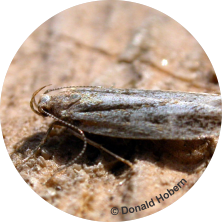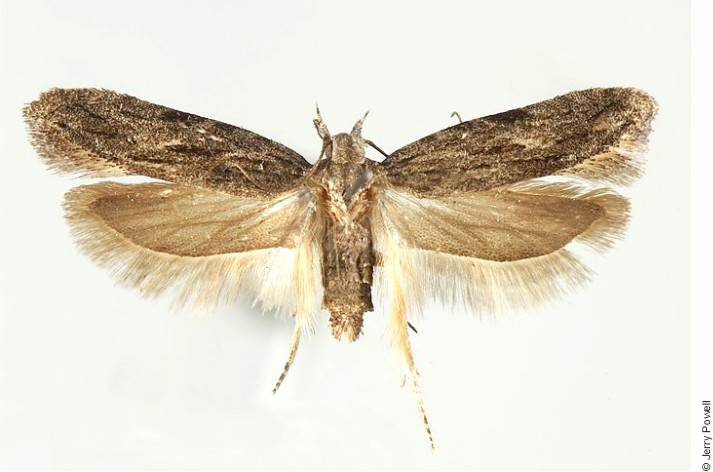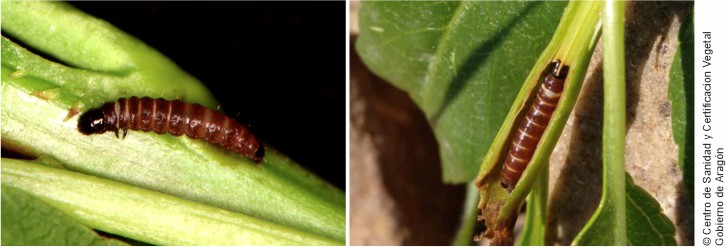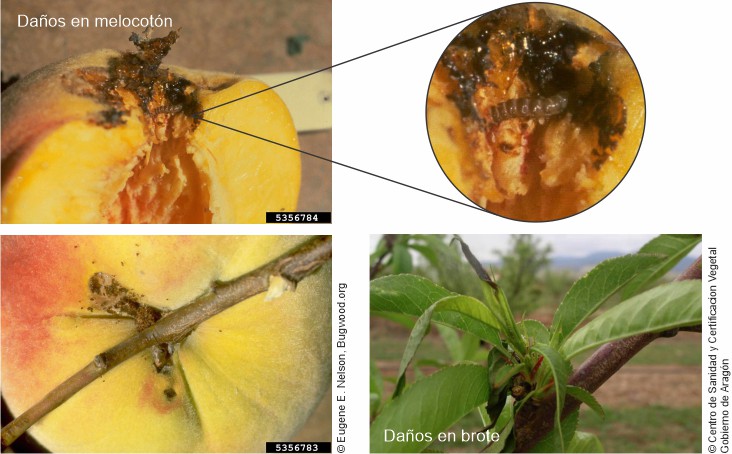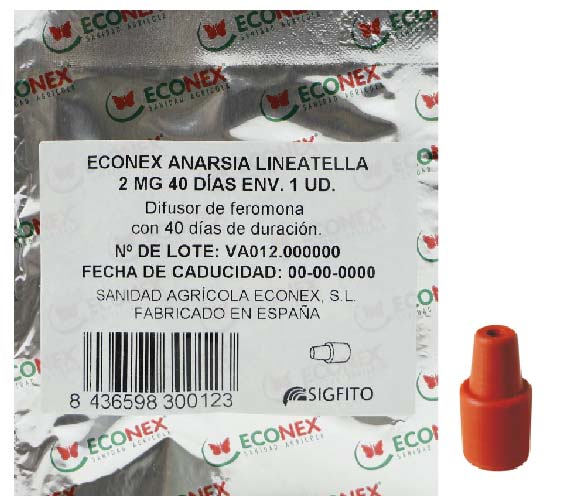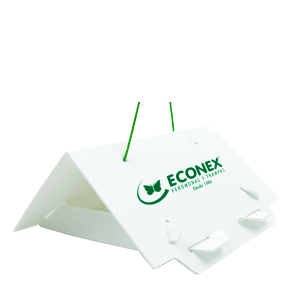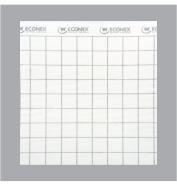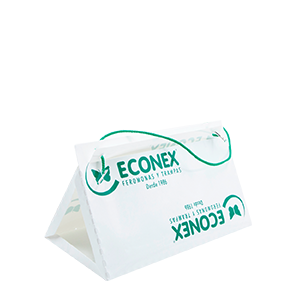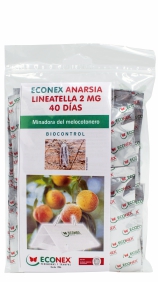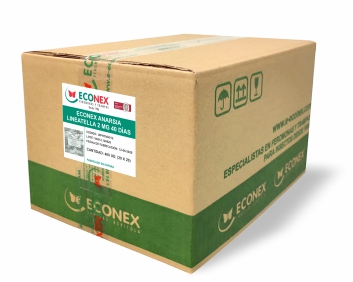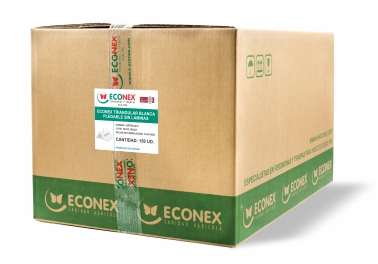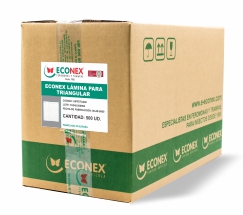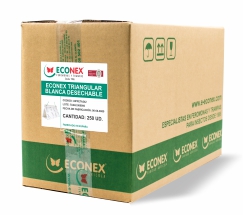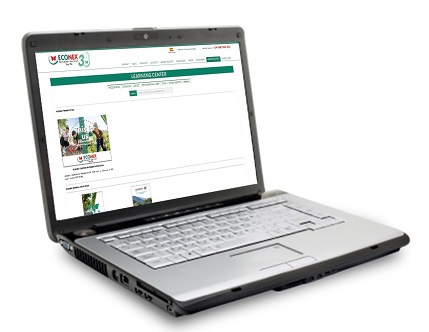As secondary host, the pear tree is cited; associated hosts are the quince tree, species of Malus (ornamental), apple tree and Pyrus spp.
Morphology and biology
The adult is large, 14 to 16 mm in size, with narrow and almost rectangular upper wings. These ones are light grey with darker lines while the lower wings are uniformly grey. When the adult is at rest the folded wings look
like a roof.
The egg measures 0.5 x 0.3 mm. When newly-laid it is white, gradually changing to yellowish orange.
The newborn larva is 1 mm long and can reach 12 or 15 mm in size in its final developmental stage. Its body is chocolate-coloured with pink intersegment membranes. The head is light brown to black.
It winters as larvae in the second developmental stage, with no activity and having lodged itself in a hole that it has bored in the bark of trees that are 1 or 2 years old. Inside this it builds a nest from silk threads and
any remains of bark.
Larvae of Anarsia lineatella
The over-wintering larvae exit the tree from late January until late March. Once outside it settles on a flower bud or a new shoot, if there are any, to feed itself. The attacked bud is left empty and the larva carves out an
axial gallery in the shoot.
Pupation takes place between two leaves and the first generation of adults appears in May-June. Adult activity is crepuscular and they feed only on water. The eggs are laid at the leaf base, stems and on the skin of the fruit.
Incubation period lasts 10 to 15 days.
The larvae feed from birth by puncturing growing shoots or fruit, preferring the latter when they are changing colour and when the buds stop growing. The second generation emerges in July-August and there is a third one in
September that produces the over-wintering larvae.
Damages
It mainly attacks peaches and nectarines, but also causes damage to almonds, apricots and plums. The damage is caused to the buds, shoots and fruits.
Damage to shoots is caused by the destruction of the tender shoots’ internal tissues. The shoots wither but sprouting continues. As a result, these damages are only significant in nurseries and plantations in young orchards.
The damage to fruit is important because the fruit with worms rot or they are unmarketable, with the added disadvantage that often the newborn larva penetrates the stalk cavity leaving a small hole that may go unnoticed and
the rotten fruit could reach the market.
